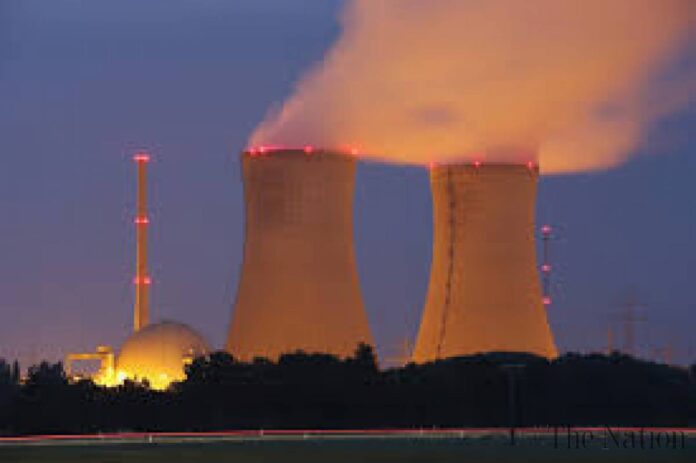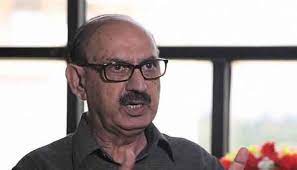Prime Minister Imran Khan on 21st May virtually inaugurated the Karachi Nuclear Power Plant Unit-2 (K-2), a third-generation state-of-the-art plant with improved safety systems. Over the years, Pakistan has been commendably successful in the application of nuclear energy and technology for the benefit and development of society. Director General of International Atomic Energy Agency (IAEA) hails the commissioning of the K-2 Nuclear Power Plant as a leap towards Pakistan’s clean energy future. Additionally, Pakistan has placed sufficient human resources capable of taking up more challenging assignments to harness nuclear energy for the economic progress of the country.
Pakistan established the Atomic Energy Commission (PAEC) in 1956. PAEC is pursuing numerous programmes and doing research and development in many diverse scientific areas, including basic and applied sciences, food, agriculture, and biotechnology, human health, energy, and industry.
Pakistan raised its first nuclear power plant with the help of a Canadian firm during the 1960s. Named KANUPP, it started producing electricity by the end of 1972 with a total power generation of more than 100 MW. This marked a distinguished year in the history of Pakistan because it joined the club of the few countries that were producing electricity by using nuclear reactors.
There is a need to admire the efforts and commitments that Pakistan has in place for its peaceful nuclear programme by rewarding Pakistan as a responsible nuclear state. Pakistan has an inherent interest in pursuing safe and efficient forms of civil nuclear energy and should continue investing in this sector.
Despite many constraints, gradually, Pakistan established four nuclear power plants at Chashma – Chasnupp 1, Chasnupp 2, Chasnupp 3, Chasnupp 4. All these nuclear reactors are now collectively producing 1435 MW of electricity.
Nuclear Energy for Economic Progress
The nuclear programme of Pakistan is effectively contributing to the welfare of people and towards the attainment of United Nations Sustainable Development Goals. To illustrate, PAEC is putting a lot of emphasis on peaceful applications of nuclear energy in the medical sector. In this regard, the organization has so far established 18 nuclear medicine and oncology hospitals throughout the country. These achievements are a matter of national pride.
Highlighting the civilian use of nuclear resources, Pakistan has used its Centres of Excellence to promote and share best practices in nuclear security through three affiliated institutes, the Pakistan Centre of Excellence for Nuclear Security (PCENS), the National Institute of Safety and Security (NISAS), and the Pakistan Institute of Engineering and Applied Sciences (PIEAS).
Similarly, Pakistan has also achieved excellence in operating safe and secure nuclear energy plants. It is evident from the history, when in 1959; PAEC signed an agreement with Canadian General Electric Company for construction of a 137-MW electrical nuclear reactor in Karachi. The Karachi Nuclear Power Plant-1 (KANUPP-1 or K-1) started commercial operations in 1972 under International Atomic Energy Agency (IAEA) facility-specific safeguards.
Karachi was the first Pakistani city to benefit from nuclear energy after KANUPP was connected to the grid. The construction of two more units i.e. (KANUPP-3) is ongoing, when completed it will bring more energy to the metropolis. The Karachi Coastal Power Project is part of Pakistan’s Nuclear Energy Vision Programme that seeks to generate 44,000 MW of electric power by 2050.
Pakistan is proactively engaged with the international community to promote nuclear safety and security. Nuclear power plants in Pakistan are under IAEA safeguards. All these efforts of expanding the nuclear energy programme are in pursuit of a clean and effective option to address Pakistan’s energy deficit and meet the international community’s ambitious goal of lowering global temperatures by two degrees in the next 30 years.
To further secure its civil nuclear materials, Pakistan has joined the Convention on the Physical Protection of Nuclear Materials (CPPNM) and the Convention on Nuclear Safety (CNS). Pakistan has introduced an extensive institutional and legislative response to secure sensitive technologies and nuclear materials to implement UN Resolution 1540.
It is highly commendable that despite being embargoed under the organized hypocrisy of the global nuclear order, Pakistan is one of the 30 countries that operate nuclear fuel cycle and operational power plants.
Pakistan’s clean history in utilizing nuclear energy is a clear depiction of its national resolve and commitment towards effective implementation of a stringent peaceful nuclear programme. Pakistan is in a position not only to use nuclear energy for its national programmes for development and progress, but also can provide assistance to other countries of the region in the peaceful uses of nuclear energy.
There is a need to admire the efforts and commitments that Pakistan has in place for its peaceful nuclear programme by rewarding Pakistan as a responsible nuclear state. Pakistan has an inherent interest in pursuing safe and efficient forms of civil nuclear energy and should continue investing in this sector.























